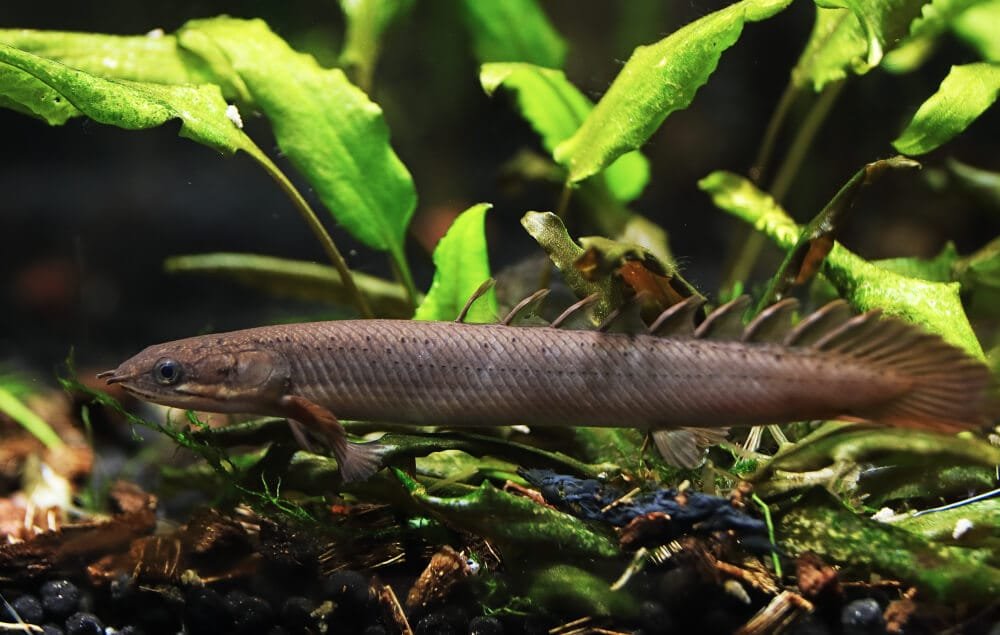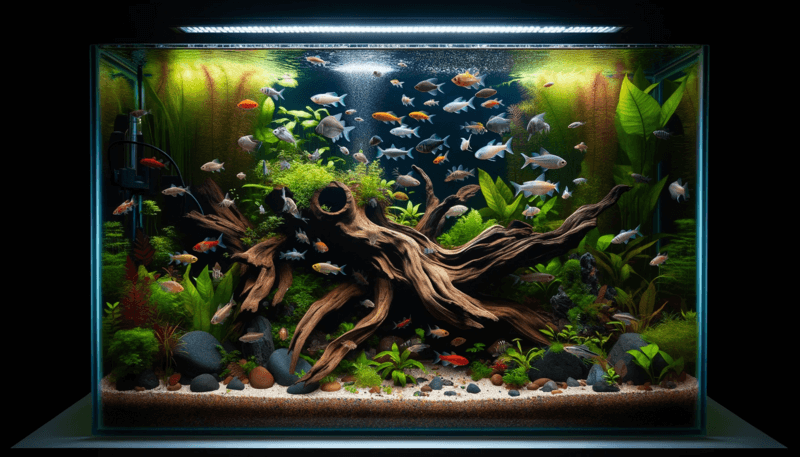Have you ever found yourself frustrated when your fish refuse to breed? If you’ve been eagerly anticipating the arrival of baby fish in your tank, but have been disappointed with the lack of breeding activity, fear not! There are several simple steps you can take to encourage your fish to breed and ensure a thriving aquatic community. From creating the ideal environment to understanding the specific needs of your fish species, this article will guide you through the necessary actions to successfully promote breeding in your beloved finned friends. So, if you’re eager to witness the miracle of new life in your aquarium, keep reading to discover what you can do to overcome this breeding challenge!
Possible Causes
Not being able to breed your fish can be a frustrating experience, but there are several possible causes for this issue. By understanding these causes, you can take the necessary steps to address them and increase the chances of successful breeding.
Inadequate Tank Setup
One of the most common reasons why fish may not breed is an inadequate tank setup. Fish require specific conditions in order to feel comfortable and ready for breeding. If these conditions are not met, they may not exhibit the desired breeding behavior.
To improve the tank setup and create a more conducive environment for breeding, there are a few key factors to consider. Firstly, it is crucial to focus on maintaining the water quality. Regular water changes, proper filtration, and monitoring ammonia and nitrate levels are necessary to create a healthy environment for your fish.
Additionally, it is essential to check the water temperature and lighting. Each fish species has specific temperature requirements for breeding, so make sure you are providing the optimal conditions for your particular species. Proper lighting, both in terms of intensity and duration, is also important for breeding.
Lastly, providing hiding places in the tank can greatly encourage breeding behavior. Fish need to feel secure and protected when they are ready to spawn. Adding rocks, caves, or plants to the tank can create the ideal hiding spots for your fish.
Incompatible Fish Species
Another factor that could be preventing your fish from breeding is the compatibility of the fish in your tank. Different fish species have different breeding habits and behavioral characteristics. Some species may not coexist peacefully or may have different requirements for successful breeding.
To address this issue, it is crucial to research the compatibility of the fish species you have in your tank. Look for information on their size, temperament, and breeding habits to determine if they are compatible. If you find that certain fish are incompatible, it may be necessary to separate them into different tanks to prevent any aggression or disruption of the breeding process.
Alternatively, you can consider creating breeding pairs within your tank. Breeding pairs consist of one male and one female of the same species, which increases the chances of successful breeding. Research the specific requirements for forming breeding pairs for your fish species and consider adding compatible pairs to your tank.
Insufficient Diet
A balanced and nutritious diet is essential for successful breeding in fish. If your fish are not breeding, it may be due to an insufficient diet that does not meet their nutritional needs. Providing a varied and balanced diet is crucial to promote breeding behavior.
To address this issue, make sure you are providing a diet that includes a variety of food sources. Fish thrive on a combination of dry food, such as flakes or pellets, and live or frozen foods. Live or frozen foods offer valuable nutrients and can stimulate fish to engage in breeding behavior. Consider incorporating foods like brine shrimp, bloodworms, or daphnia into their diet.
Furthermore, some fish species have specific dietary requirements during the breeding season. Research the specific dietary needs of your fish species when they are ready to breed and consider adding specialized breeding diets to their feeding regimen. These diets are designed to provide the necessary nutrients and hormones to support successful spawning.
Age or Health Issues
Age and health issues can also play a role in preventing fish from breeding. If your fish are not breeding, it is important to check for signs of illness or injury. Sick or injured fish may not be in the optimal condition for breeding and may require isolation and appropriate treatment.
Regularly observe your fish for any abnormal behavior, physical symptoms, or changes in appetite. If you notice any signs of illness, it is crucial to separate the affected fish from the rest of the tank to prevent the spread of disease. Consult an experienced fish veterinarian or a knowledgeable fish enthusiast for guidance on diagnosing and treating any health issues.
Providing optimal conditions in the tank is also important for encouraging breeding behavior in fish. Ensure that the water parameters, such as temperature, pH, and salinity, are within the appropriate range for your fish species. Maintaining good water quality and meeting the specific needs of your fish can contribute to their overall health and increase the likelihood of successful breeding.
Encouraging Breeding Behavior
Creating the ideal conditions for breeding behavior is an important aspect of promoting successful spawning in fish. By considering the following factors, you can increase the chances of your fish exhibiting the desired breeding behavior.
One key factor is providing the proper tank size and ratios. Some fish species require larger tanks or a certain ratio of males to females in order to stimulate breeding. Research the specific requirements for your fish species to determine if your tank setup is suitable for breeding. If necessary, consider upgrading to a larger tank or adjusting the male-to-female ratio to create the optimal breeding conditions.
Grouping fish together for social stimulation can also encourage breeding behavior. Some fish species are more likely to breed when they are in the presence of other conspecifics. This social interaction can trigger breeding instincts and increase the chances of successful spawning. However, be cautious not to overcrowd the tank, as this can lead to stress and aggression among the fish.
Mimicking Breeding Conditions
In some cases, mimicking specific breeding conditions can help stimulate breeding behavior in fish. By adjusting certain factors in the tank environment, you can create an environment that resembles their natural breeding conditions.
One important aspect to consider is water temperature and pH. Many fish species have specific temperature and pH requirements for breeding. Research the ideal conditions for your particular fish species and adjust the water parameters accordingly. This can help mimic the seasonal changes that occur in their natural habitat and encourage breeding behavior.
Creating hiding spots or breeding caves in the tank can also mimic the natural environment and stimulate breeding. Some fish species prefer to lay their eggs in secluded areas or caves, so providing suitable hiding spots can encourage them to engage in spawning behavior. Decorate the tank with rocks, caves, or artificial plants to create these hiding spots and promote breeding.
Additionally, using spawning mops or artificial plants can provide a surface for fish to lay their eggs. These materials simulate the spawning substrate that fish would encounter in their natural habitat. By attaching the mop or artificial plants to the tank, you provide a suitable surface for the eggs to adhere to, increasing the chances of successful breeding.
Spawning Triggers
Certain spawning triggers can be utilized to encourage fish to breed. These triggers simulate natural breeding conditions and can stimulate the necessary hormonal changes for successful spawning.
One common method is to simulate seasonal changes in the tank environment. This can be done by gradually adjusting the lighting duration and intensity over a period of time. Mimicking the changes in daylight hours that occur in the fish’s natural habitat can signal the onset of the breeding season and trigger breeding behavior.
Commercial spawning aids are another option to consider. These products contain hormones or pheromones that mimic the natural reproductive cues of fish. Adding these aids to the tank can stimulate the release of hormones in fish, encouraging them to engage in breeding behavior. Research and follow the instructions provided by the manufacturer when using commercial spawning aids.
Separating Breeding Pairs
Identifying breeding pairs within your tank can be crucial for successful breeding. Some fish species have specific courtship behaviors and require a male and female pair to spawn. Separating these pairs into their own tanks can provide them with the ideal conditions for breeding and increase the chances of successful spawning.
To identify breeding pairs, observe the fish’s behavior and look for signs of courtship rituals. Male fish may display vibrant colors or engage in elaborate mating displays to attract females. Once you have identified a potential breeding pair, carefully transfer them to a separate tank with appropriate water conditions. Provide them with suitable hiding spots and monitor their behavior for signs of successful breeding.
Seeking Professional Advice
If you have tried various methods and are still having difficulty breeding your fish, seeking professional advice can be beneficial. Consulting an experienced breeder, visiting a local fish store, or joining online fishkeeping forums can provide valuable insights and guidance.
Experienced breeders and fish enthusiasts can share their knowledge and offer specific advice based on their own experiences. They may be able to identify any potential issues with your setup or provide recommendations for improving the breeding conditions for your fish.
Local fish stores often employ knowledgeable staff who can also provide guidance and recommendations tailored to your specific fish species. Take advantage of their expertise by asking for advice and discussing your concerns with them.
Online fishkeeping forums are another valuable resource for seeking advice from a community of fish enthusiasts. Engage in discussions, ask questions, and share your experiences to receive helpful feedback from other hobbyists who may have faced similar challenges.
In conclusion, if your fish are not breeding, it is important to assess the possible causes and take appropriate actions to address them. By improving the tank setup, ensuring compatibility among fish species, providing a balanced diet, maintaining optimal conditions, and mimicking breeding conditions, you can increase the chances of successful breeding. Additionally, by encouraging breeding behavior, utilizing spawning triggers, separating breeding pairs, and seeking professional advice when needed, you can further enhance your chances of successfully breeding your fish. Remember to be patient and persistent, as breeding behaviors can take time to develop and may require adjustments to your approach.




